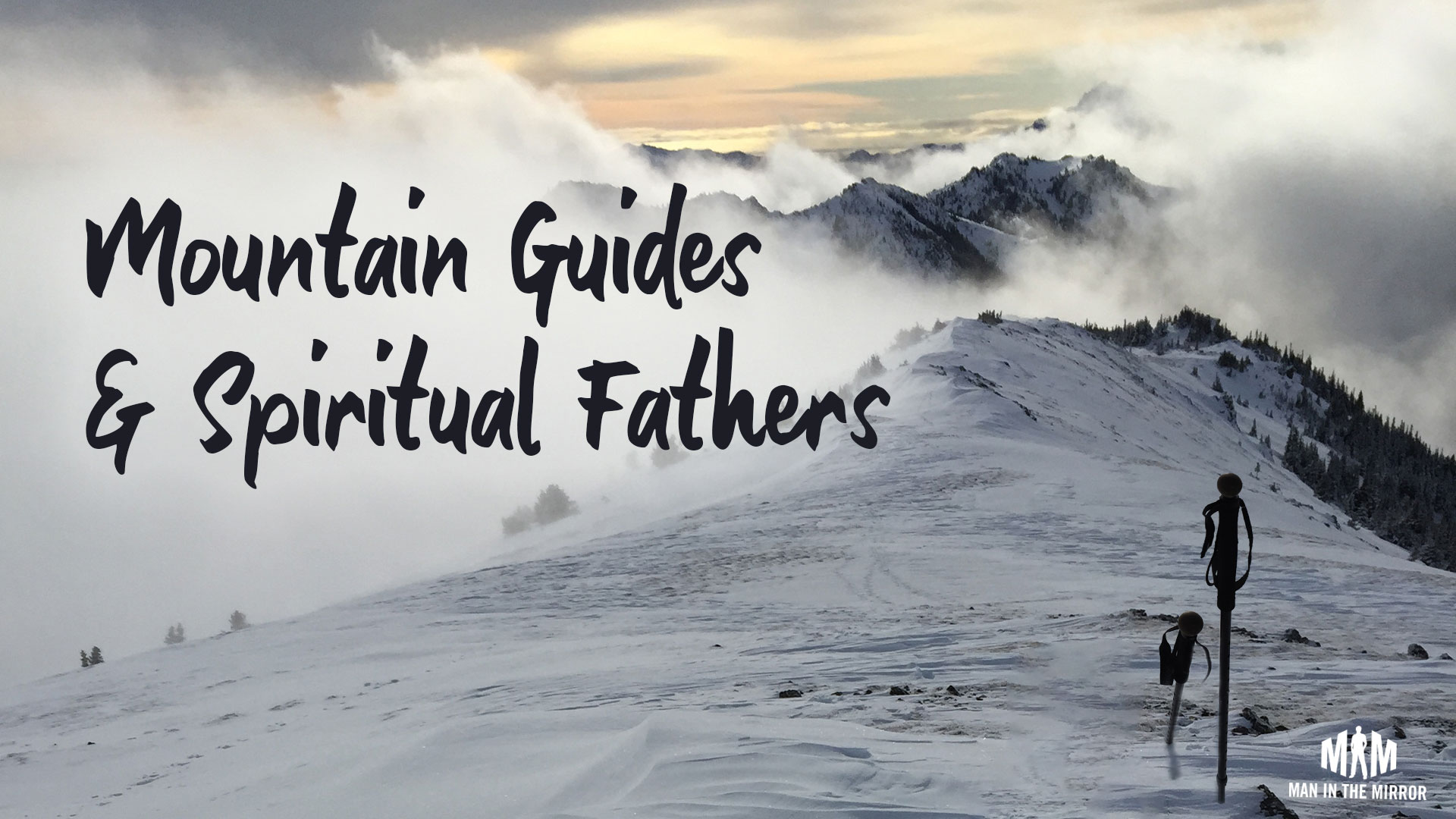What does it take to climb the highest peaks in the world? You need a guide with the experience and know-how to get you to the summit. You can learn a lot about discipleship from a mountain guide, including the most critical factor of all.

By Brett Clemmer
President & CEO
Casselberry, FL
Imagine that you decided to climb Mt. Everest. You’ve watched the movies and documentaries and so you know that the first thing to do is hire a guide.
You talk to Steve from the First Everest Guide Service over the phone and arrange to meet him at Base Camp. After overcoming a lot of travel obstacles, you finally arrive—excited, nervous, and eager to get going.
Steve is there, all smiles, and greets you with a hearty handshake. “You ready to do this thing?” he asks enthusiastically. You take a deep breath and nod.
Steve reaches into his pack and pulls out a book for you: How to Climb Mt. Everest: A Primer. Then he hands you a folded-up map. You open it and see a picture of the mountain with a red line and several X’s.
“That’s your route and those X’s are campsites,” Steve says. Then he hands you a gear list and points you to a pile of equipment. You see air tanks, parkas, mittens, crampons, and ropes. “Grab whatever you need.”
Finally, he puts his arm around your shoulders and turns you toward the mountain. It’s a clear day and you can see the summit, snow billowing off it like smoke from a chimney on a windy day. “Amazing, isn’t it?” Steve says. “Okay, go get ’em, Tiger!”
As guides go, I’d say Steve is terrible. While he may have given you most everything you need from an equipment and knowledge standpoint, we both know that’s only part of what you need from him. What you really need is for him to go with you.
“Go Get ‘Em, Tiger” is Not a Discipleship Strategy
Discipleship often looks somewhat like this in the church. We read books, sit through lectures, and even have a map to follow sometimes, but what we really need is someone to go with us.
[click_to_tweet tweet=”A good mountain guide doesn’t just point at the summit and say, “Go get ’em, Tiger!” and a good spiritual guide doesn’t do that either. A good guide goes with you.” quote=”A good mountain guide doesn’t just point at the summit and say, “Go get ’em, Tiger!” and a good spiritual guide doesn’t do that either. A good guide goes with you.”]
What can we learn about discipleship from this mountain guide analogy?
- Your guide has been there before. You wouldn’t want to hire a guy to get you up Mt. Everest who had never been there before. You want someone who knows what it takes. They’ve stood on the summit, and even failed a few times before they got there. Those experiences are vital to being an effective guide.
- Your guide goes with you on the trip. Climbing Mt. Everest is dangerous. There are ice falls, crevasses, blisteringly cold winds, unpredictable weather conditions, too little oxygen, and a lot of suffering. A good guide experiences every one of those alongside you. He takes the risks you take, suffers what you suffer, and succeeds or fails in the attempt with you.
- Your guide tells and shows. A good mountain guide teaches you to do things for yourself by modeling it. He doesn’t expect you to read about tying a knot or working an oxygen tank. He shows you how to do it, checks to make sure it’s right, over and over, until he’s confident you know how to do it. He even teaches you to check his work, so that you can protect each other.
- Your guide had a guide. No one becomes a guide by studying, or by trial and error. A good guide is trained and equipped by a more experienced guide, who was trained and equipped by a good guide before him.
Here’s the application: If you want to grow in your faith, you need a guide. You can read books, go to classes, listen to sermons, watch YouTube videos, and attend conferences. But the biblical model for discipleship is just what Jesus said: “Come, follow me” (Mark 1:17).
THE BIG IDEA: The biblical model for discipleship includes someone to guide and go with you; it’s Jesus’ model when He said, “Come, follow me.”
Jesus as a Guide: “Come, Follow Me”
Jesus wasn’t just saying, “Listen up, and follow my teaching.” He was saying, literally come and be with me, physically present, living life in proximity, talking on long walks between villages, sharing meals, sleeping in each other’s houses, going to synagogue and temple together (John 1:37-39).
Watch me heal people, and then you’re going to heal people (Luke 9:6). Watch me feed people and then you’re going to feed people (Mark 6 & 8). Watch me teach and then you’re going to teach (Matthew 10:5-15). If you don’t understand something, I’ll explain it to you privately (Matthew 13:10-23).
Watch me suffer, watch me die. Then you do the same (Luke 9:23). Because you’ll watch me come back from the dead, and you will too (John 11:25).
Likewise, Paul lived this out by bringing guys like Timothy and Silas along with him on his journeys. They learned by watching and participating, and finally he sent them to different places on his behalf, and then commissioned them to lead churches themselves (2 Timothy 1:6).
To the church in Corinth, Paul said, “Imitate me as I imitate Christ” (1 Cor. 11:1). That’s discipleship.
Discipleship in Cold, Thin Air
[click_to_tweet tweet=”Discipleship is not just knowing the gospel intellectually; it’s living the gospel life abundantly.” quote=”Discipleship is not just knowing the gospel intellectually; it’s living the gospel life abundantly.”]
Discipleship is about acquiring knowledge—but that’s only part of it.
Discipleship is about learning by doing. Sometimes it’s in the classroom, but most of the time it’s dirty and in the trenches. It’s walking through marriage and family issues, job loss and promotions, cancer and healing, grief and joy. It’s not just knowing the gospel intellectually; it’s living the gospel life abundantly.
Did you have a good spiritual guide in your life? Have you been taken along on a journey of spiritual growth, learning and living the gospel, experiencing the Holy Spirit’s power together? Then it’s time for you to be a guide to someone less experienced than you who wants to climb the mountain of faith.
Even if you don’t yet feel qualified, you can still be a guide to someone who’s behind you on their spiritual journey while at the same time, finding someone who’s farther along than you to follow.
And if you are looking at the mountain right now, wondering how it’s even possible to climb toward the summit of spiritual maturity, look around for a man whose life you would like to imitate. Don’t look for that outwardly perfect guy with the perfect family, or the Bible scholar who seems brilliant. Look for someone whose face is leathery from the harsh conditions, who has lost a finger or two to frostbite, who has failed a few times but kept on trying for the summit, and whose love for Christ and his brothers is obvious.
[click_to_tweet tweet=”Humble, broken men who know their limits make the best spiritual guides.” quote=”Humble, broken men who know their limits make the best spiritual guides.”]
Those guys have stories that you can learn from. (Jesus told lots of stories, remember?) Humble, broken men who know their limits make the best guides—mountain guys and spiritual guides.
At Man in the Mirror, we are looking for men like this who want to be guides. We call them “Spiritual Fathers,” but the concept is the same. Stay tuned in the weeks ahead as we talk about spiritual fathers while we study 2 Timothy together. You’ll see articles here, Bible study videos on YouTube and our website, and discussions about it on our podcast.
We are looking forward to this journey together.
♦♦♦
[vc_widget_sidebar sidebar_id=”businesslounge-free-2″]






